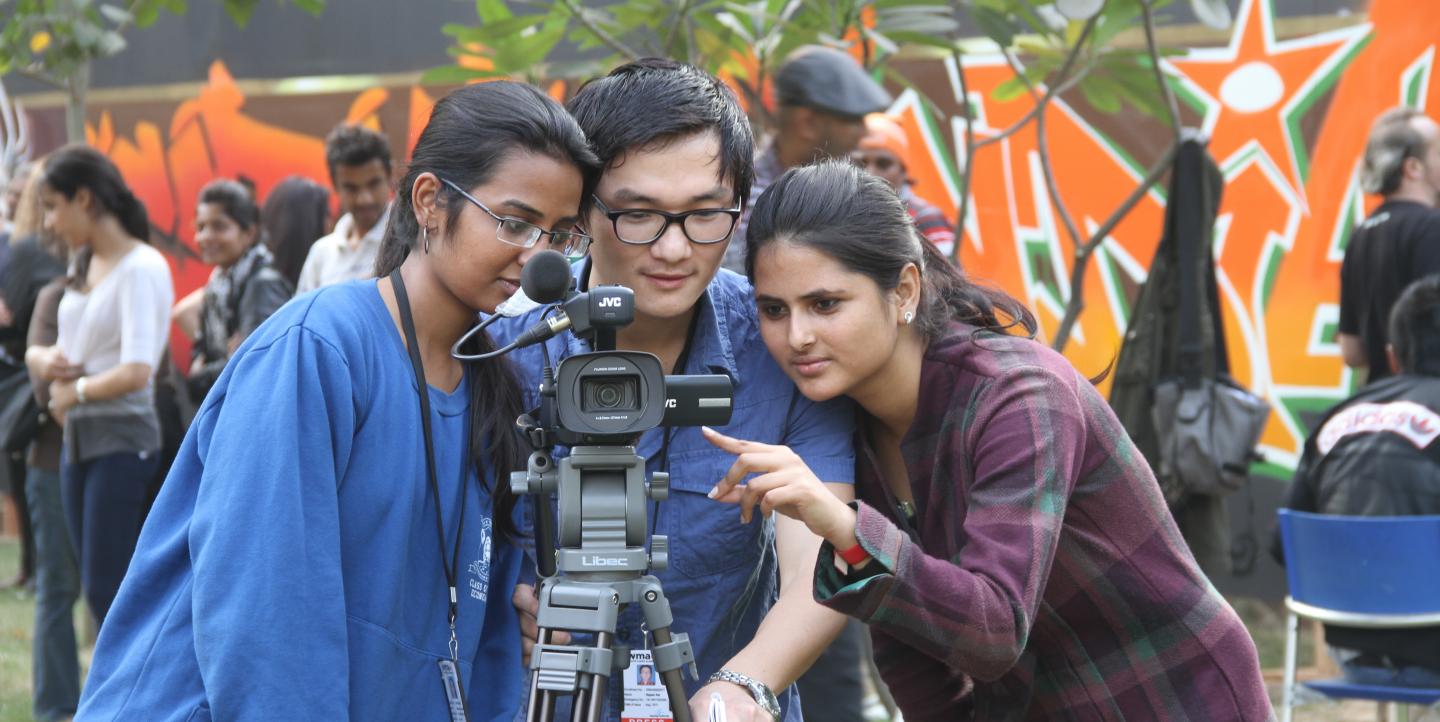A journalism school in India is taking its curriculum to the next level with digital courses and world-class internships.
The World Media Academy weaves broadcast, basic journalism and online training into a 10-month program that results in a post-graduate certificate.
A project of the International Center for Journalists and the John S. and James L. Knight Foundation, the academy is finishing up its first year with 14 graduates from all over the globe, including Nepal, Bhutan, India, Italy and Los Angeles.
IJNet chatted with Knight International Journalism Fellow and WMA Dean Siddhartha Dubey about the latest projects and what the school has in store for the next semester.
IJNet: With a focus on broadcast journalism, how is the academy preparing students for the future of digital journalism?
Siddhartha Dubey: That's what we're introducing for the next academic year. We've hired separate faculty, Sehrish Shaban, who produced content for washingtonpost.com and Reuters online. She's going to teach digital media, which encompasses how to report online, how to use social media effectively, how to shoot differently for the Internet in regards to television and how to create or transmit stories in a Twitter fashion or something really short.
IJNet: What kind of projects do students work on during the program?
SD: We had Julie Nolin, as visiting faculty from Canada, who developed a broadcast studio model for the students. They had to pitch their stories and faculty had to decide which of their stories made the cut. They spent the whole week doing the stories and at the end of the week they went to tape the completely student-produced 10-minute news feature show. They did everything from anchoring, editing, creating graphics, music, everything that goes into a student show. The broadcast show goes on the YouTube channel and Facebook page to encourage some of the students to perhaps revisit the story and do it better, perhaps freelance it.
Students are currently being partnered up with colleagues from the University of Nebraska journalism school and they're all going out on photo assignments together, so that's also a new feature.
IJNet: You offer internship placements for students with big names like the Washington Post, the Associated Press and Reuters. Have students actually secured jobs after the program?
SD: Six students secured jobs or received offers from [outlets] like the New York Times, Al Arabiya, France 24 and Associated Press Television News. Most were all direct translations into jobs from internships. Internships are key. The thing is, you introduce them to these other TV stations or news organizations and you tell them that they have to work really hard to prove themselves and every single student who came back from the internship said they seemed to have an edge over their colleagues because they knew how to edit, to work on deadline and how to think as a journalist.
IJNet: Now that the academy is finishing up its first year, what lessons have you learned and what challenges lie ahead?
SD: Indian broadcast and electronic media is in a state of flux. TV stations, newspapers and websites are reining in on the amount of money they're spending. It's a big challenge to get our students fully fit to enter the media and get them employed and I think we have the edge in regards to making all these journalists multimedia operators. Newsrooms are changing. High-salaried people are being laid off. Low-salaried younger people are being brought on and given more work to do. It's challenging and exciting for me as the guy who runs it.
The academy is recruiting students for its Fall 2012 semester. Interested students can apply for the academy here by mid-July and payment is due by July 31. The academy is aiming to provide scholarships based on merit to those in need.
Image provided by WMA: From left to right - Malavika Vyawahare of India, Rajesh Rye of Bhutan and Yamu Kandel of Nepal.

